Solanum Lycopersicum, aka the tomato, is a flowering plant belonging to the nightshade family according to the University of Florida.
They are grown for their edible fruit. For nutritional purposes, though, they are labeled as vegetables.
Tomato plants are multi-branched. Not only do they need their space, but also plentiful water.
Their scarlet, yellow, green, and purple varieties can end up being overwatered.
This is why owners, to avoid overwatering them, end up underwatering them.
Underwatered Tomatoes – How to Tell If My Tomatoes Is Underwatered?
Tomatoes show the same symptoms when underwatered as overwatered. The leaves begin to wilt, turning yellow and curling at the tip and edges. Fruit will not harden. The soil will be hard to the touch. If you pull the plant out for repotting, you will observe dried, curled-up roots.
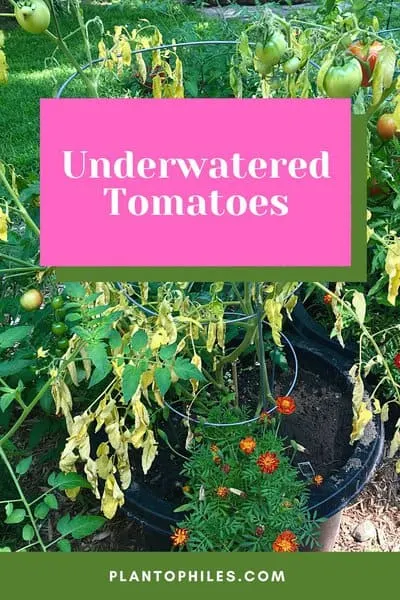
5 Symptoms of Underwatered Tomatoes
Keep an eye out for warning signs, it is wise to do so.
Tomato plants cannot tolerate dehydration for extended periods of time. You can tell if your plant is dehydrated by identifying the following signs.
1. Droopy, Wilting Leaves
Tomatoes will droop and wilt when they are thirsty and dehydrated, just like the majority of other plants.
When you see that your tomato plants’ leaves are acting in this way, examine the soil to see if it meets certain conditions, including whether the top few inches are moist.
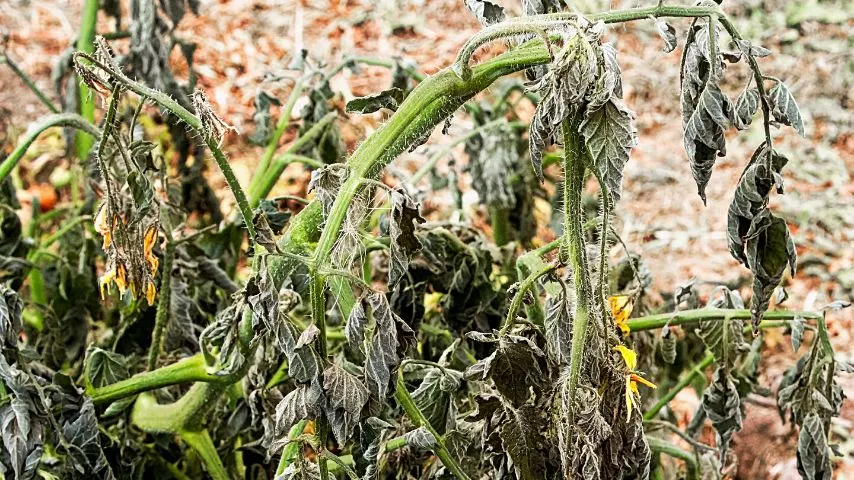
Your tomato plant is pleading with you to water it if the leaves are not sturdy. If the only issues you notice are the soil and the drooping, all you need to do is water them.
Your tomato plants will recuperate in due time and will be healthy again.
2. Fragile Fruit — Discolored Leaves
Your Tomatoes’ leaves will begin to dry out and die if it is significantly underwatered. Look out for any crunchy areas, especially on the upper leaves.
Furthermore, the fruit will not harden.
With its exterior all vulnerable, it leaves room for flies and insects to eat and damage the fruit. These dry, dark, and light brown blotches on your Tomato might grow due to dry soil and a lack of water.
You should also get rid of the dead leaf sections whenever the chlorophyll in the leaves starts to fade.
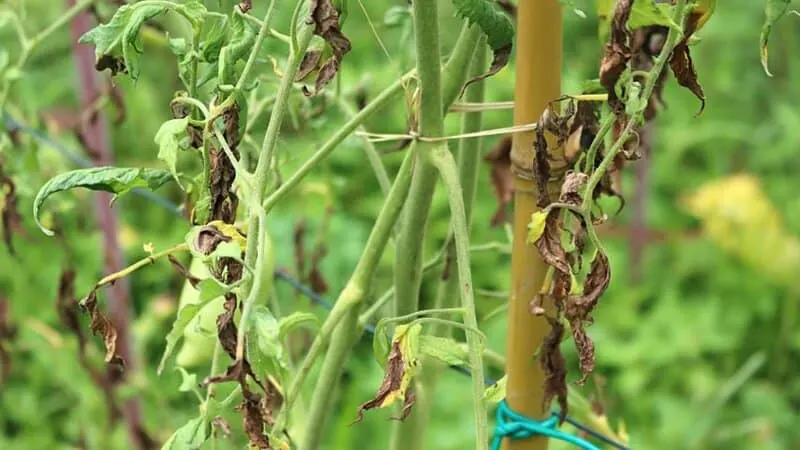
If required, remove the entire leaf to ensure that the plant is free of sick and dead tissue. Cut away at it with shears.
3. Slow Growth
If your tomatoes are growing slowly or have stopped growing altogether, this may indicate that the plant is underwater.
You should check your lighting — where are your tomatoes planted, and are they getting enough light?
Consider the last time you fertilized the soil as well. How recently was it?
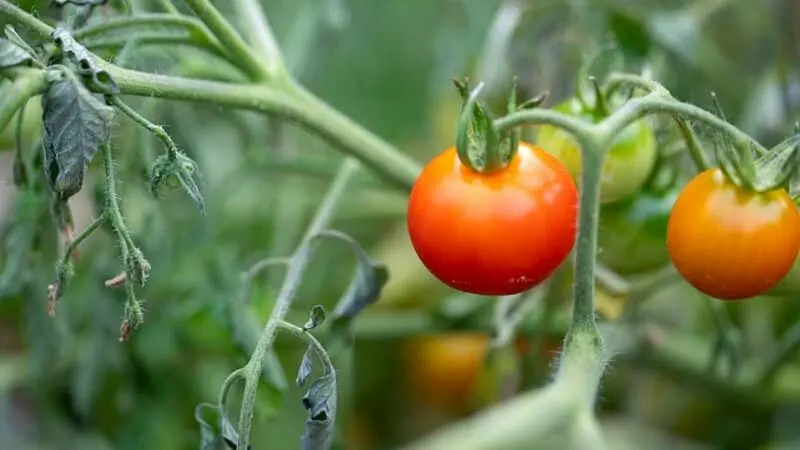
You might have to re-fertilize the soil to jumpstart the growth of the plant. Light, water, soil, and other nutrients are what your Tomatoes need to grow.
Should you choose to re-fertilize, you will need to remove all of the old ones to make room for the new ones. You don’t want to fertilize your tomatoes too much, though.
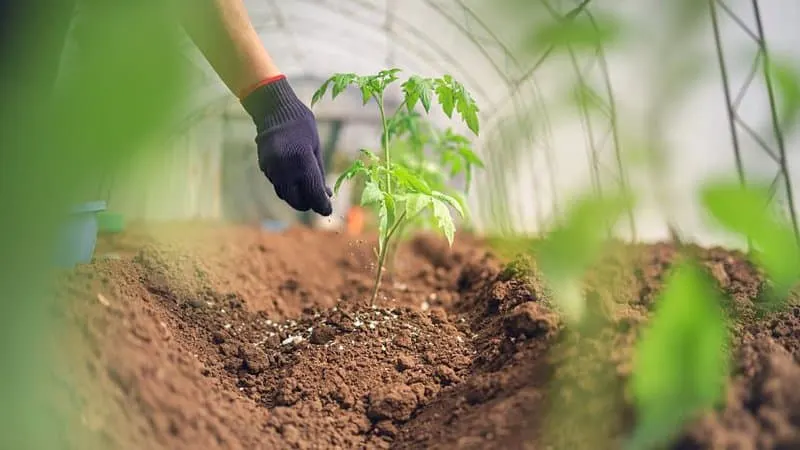
Therefore, before making this choice, be certain that you are meeting all of your plant’s other needs. Keep an eye on how quickly your soil dries and if you are underwatering your plant.
4. Failure to Flower
The disappearance of blooming flowers is another sign of low nutrition and mineral levels. Your tomato plant may occasionally completely fail to blossom.
In turn, the plant’s productivity may decline as a result of the absence of flowers.
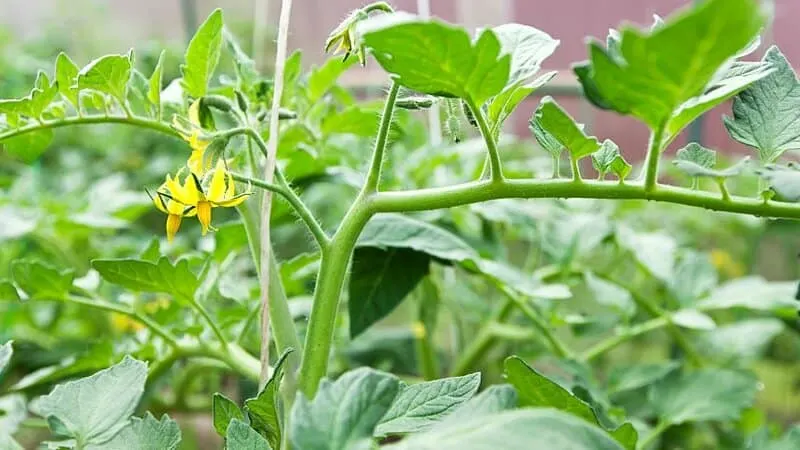
You should anticipate a meager crop if your plant is producing a few flowers or dropping early flowers. Even with timely and effective treatment, this may result in a late harvest at the end of the summer.
5. Curling, Yellowing Leaves
Another sign that your tomato is underwatered is yellow spots on Tomato leaves. These two signs, along with dry brown areas, indicate that your tomatoes need watering right away.
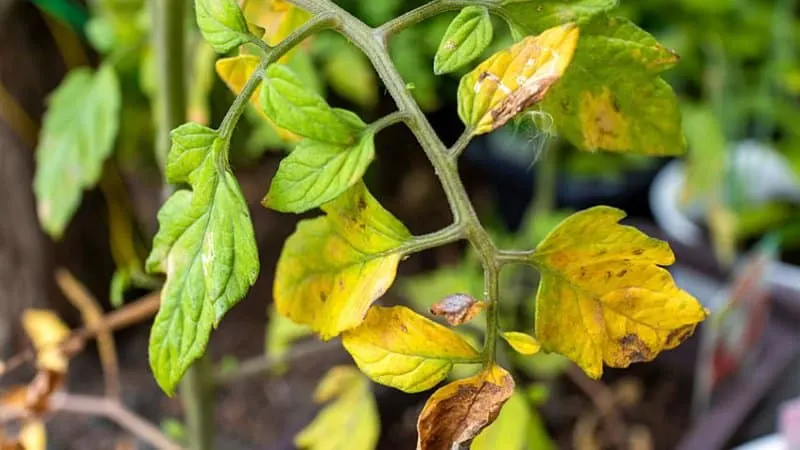
But caution is advised here.
Yellow leaves accompanied by dark brown blotches on top are a sign that your tomatoes are severely underwater.
Tomato leaves may curl in low humidity. Curled leaves are a sign that your tomato is underwatered.
Before watering your tomatoes, try humidifying them. Additionally, dry, compacted soil might result in underwatering, which makes the leaves curl.
Saving Underwatered Tomatoes
You want to ensure that you water your tomatoes adequately. For healthy growth, try sticking to one watering schedule only.
You will want to act as soon as you notice even one of the symptoms.
1. Remove Stagnant Water
Water may remain stagnant in drip trays — especially if you are tending to indoor plants, and the first thing to do is to remove it.
This water buildup is preventing roots from absorbing water and keeping your Tomato underwatered in the process.
This buildup applies to outdoor plants as well. Be sure to remove any automatic irrigation system you might have installed.
Manually watering the plant is the safest bet.
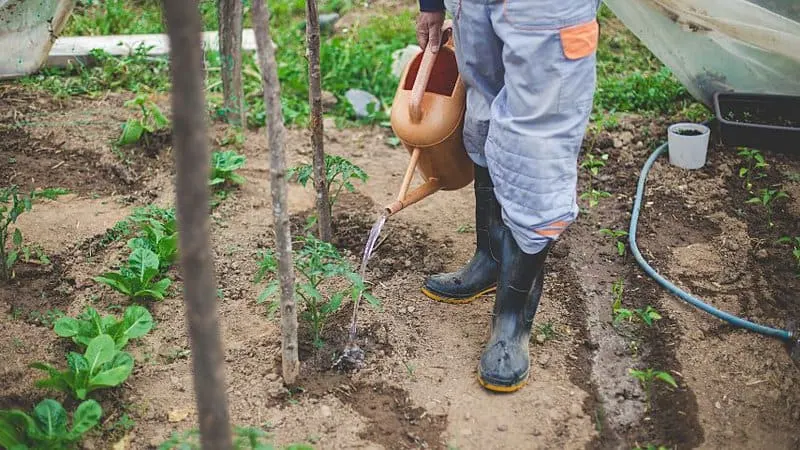
2. Root Rot Treatment
First, remove soil that remains and dirt still affixed to the lateral branches and the hair before treating the roots.
Continue by removing any diseased or rotten roots. Use only sterile, thoroughly cleaned clippers or shears while doing this.
This step is crucial to take in order to prevent root contamination and the potential spread of diseases to the plant.
Additionally, make sure to use cutting tools that are sharp yet won’t cause the plant’s roots too much harm.
3. Repot Your Tomato
It’s also good for the soil to let the roots dry out for a bit. Indeed, the liquid trapped underneath swiftly evaporates as the lower strata are exposed.
Repot or replant your tomatoes in better soil, and apply mulch to control moisture levels in the potting mix.
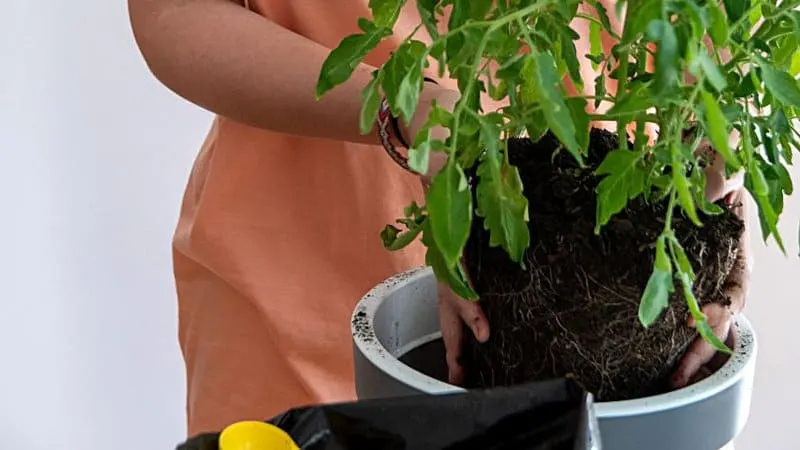
Choose a new potting mix with at least 1% hydrogen peroxide in it if you are moving an indoor plant. This material has the potential to control the soil’s aeration level, which will ultimately aid in root oxygenation.
Frequently Asked Questions About Underwatered Tomatoes
How Many Times Should I Water My Tomatoes?
A recently planted transplant needs less water than a fully established plant. The soil used, the material of the pot used, and the weather affects the watering frequency. But, water more often during hot and dry weather. Water yours accordingly.
Can I Mist My Tomatoes?
Don’t mist your tomato plants. While spraying some indoor plants might be beneficial for their health, the excessive wetness that would result from misting these plants’ leaves could result in rot, fungal infections, and other possibly lethal problems.
Are my Tomatoes Underwatered?
By sticking your finger into the ground 2 to 3 inches deep, you can have the soil around the tomato plants’ bases. The tomatoes are under-watered if the soil is dry. Your tomatoes have been overwatered if the soil is wet. To the touch, the soil should feel damp.
Conclusion About Underwatered Tomatoes
Underwatered tomatoes can be identified by curling leaves that turn yellow, fruit that is not hardening, and dried-up soil and curled roots. In addition, underwatered tomatoes will grow slowly. To save an underwatered tomato remove stagnant water, treat rotting roots and repot the plant into new potting soil.

Daniel has been a plant enthusiast for over 20 years. He owns hundreds of houseplants and prepares for the chili growing seasons yearly with great anticipation. His favorite plants are plant species in the Araceae family, such as Monstera, Philodendron, and Anthurium. He also loves gardening and is growing hot peppers, tomatoes, and many more vegetables.


